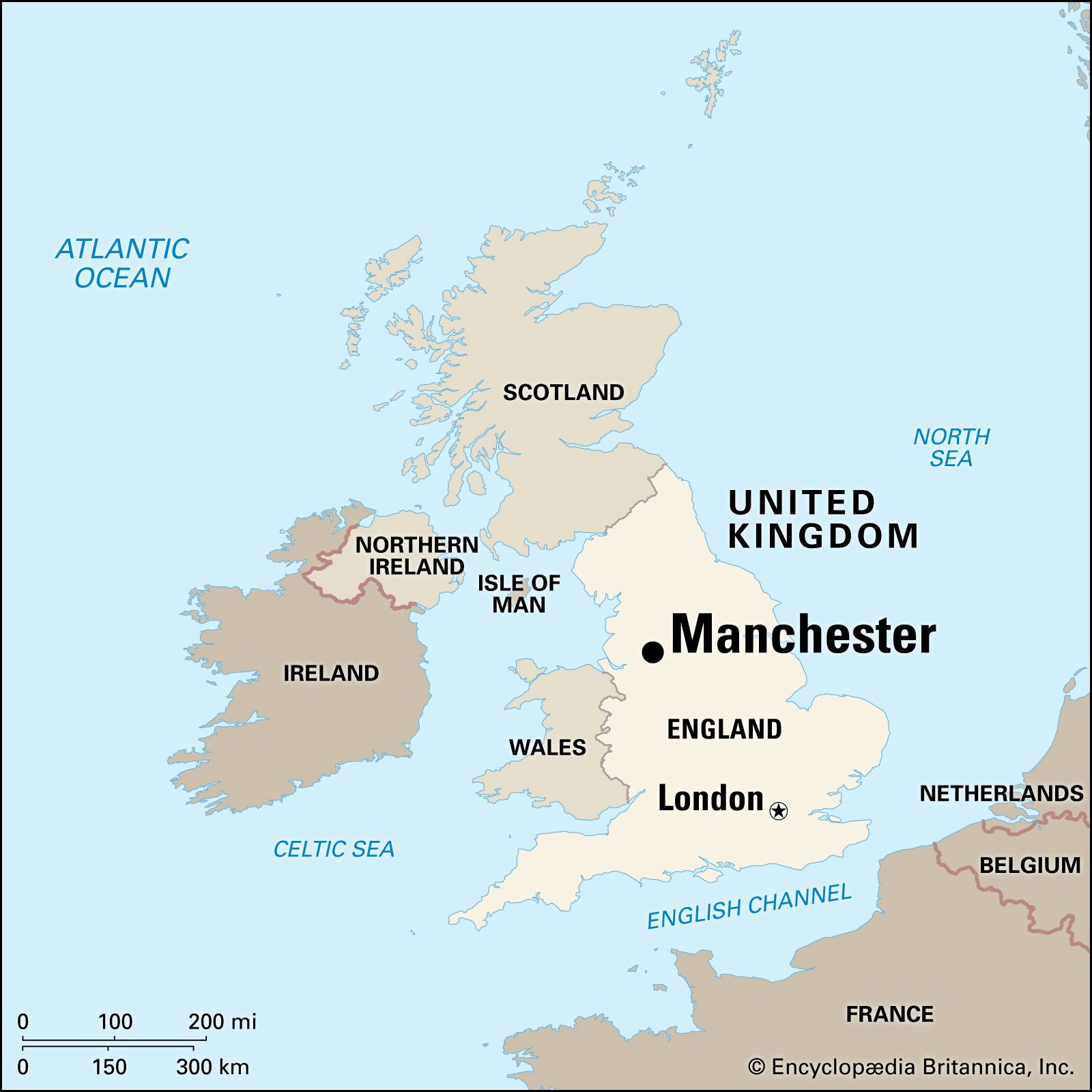Manchester, often abbreviated as Manchester GB to distinguish it from other Manchesters globally, is a significant city in the United Kingdom. But Where Is Manchester Gb exactly? Let’s delve into the geographical details of this influential urban center, exploring its landscape, urban structure, and climate.
Manchester is situated in North West England. To pinpoint where is Manchester GB more precisely, it lies within the Manchester embayment, a relatively flat plain formed by river gravels and glacial drift. This plain is positioned at approximately 133 feet (40 meters) above sea level. The city is geographically enclosed by the Pennine hills to the east and the Rossendale upland spur to the north, defining its natural boundaries.
 Cityscape of Manchester, England, showcasing its urban environment and geographical setting
Cityscape of Manchester, England, showcasing its urban environment and geographical setting
Historically, the underlying geology of the Manchester area included coal measures, which fueled extensive mining operations until the late 20th century. The city of Manchester itself is primarily located on the east bank of the River Irwell. Its shape is elongated in a north-south direction, reflecting urban expansion during the late 19th and early 20th centuries. A notable expansion occurred in 1930 when Manchester extended its southern boundaries across the River Mersey, incorporating a substantial portion of north Cheshire.
Adjacent to Manchester, you’ll find key metropolitan boroughs. Salford lies to the west, and Trafford to the southwest. These three administrative areas form the core of commercial activity in the region. From this central point, suburban areas have expanded significantly westward and southward, particularly into Cheshire East. To the north and east of Manchester, a network of smaller industrial towns and suburban developments creates a continuous urban sprawl that reaches towards the base of the surrounding uplands. Encircling Manchester near the upland fringes is a ring of historically significant towns. These towns—including Bolton, Bury, and Rochdale to the north, and Oldham, Ashton-under-Lyne, and Stockport to the east—were traditionally the powerhouses of the cotton-spinning industry.
The urban layout of metropolitan Manchester is largely dictated by its industrial zones. A dominant east-west industrial belt bisects the area. This zone is home to a range of heavy industries, from petrochemical plants near Irlam along the Ship Canal, to electrical engineering in Trafford Park and Salford, and machine tool and metal fabrication industries in eastern parts of Manchester. In contrast, the industrial presence in the south of Manchester is more concentrated, featuring planned factory estates in areas like Altrincham and Wythenshawe. North and east of the city center, older industrial areas stretch out along railway lines, river valleys, and former canals. Here, you can still see remnants of electrochemical industries in the Irwell valley, dyestuffs production near the River Irk, and numerous old textile mills, many of which have been repurposed for modern industrial uses.
Manchester’s climate contributes significantly to its character. It is often described as mild, moist, and misty. The climate is temperate, lacking extreme temperature variations. Winters are mild, with average January temperatures around 4°C (high 30s F), while summers are cool, with average July temperatures around 15°C (high 50s F). While occasional high-pressure systems can bring cold, clear winter spells or hot summer droughts, these are generally short-lived. Winds predominantly come from the west and south, bringing frequent light rain from the Atlantic weather systems. The annual rainfall averages about 818 mm (32 inches), which is not exceptionally high for western Britain, but it rains on approximately half the days of the year. Seasonal variation in rainfall is minimal, although March to May typically offer the best chances for extended dry periods.
The Pennine hills to the east contribute to significant cloud cover, with the afternoon sky being at least half cloudy on about 70 percent of the days. This naturally limits sunshine. Historically, air pollution from Manchester’s industrial past further reduced sunshine, with the city center recording only about 970 sunshine hours annually until around 1960. Dense fogs were also a common issue, with an average of 55 days of serious fog per year, leading to increased respiratory disease mortality rates. However, effective air pollution control measures have dramatically improved Manchester’s climate. Annual sunshine hours have increased to around 1,300, and serious fog days have decreased to about 20 per year. This improvement has played a crucial role in reducing the prevalence of respiratory diseases like bronchitis and tuberculosis, which once contributed to a high death rate in the city.
In conclusion, where is Manchester GB? It is located in the Manchester embayment of North West England, a city shaped by its geography, industrial heritage, and a characteristically mild and moist climate that has seen significant improvements in air quality. This detailed exploration of Manchester’s location and environment provides a comprehensive understanding of what makes this UK city unique.
